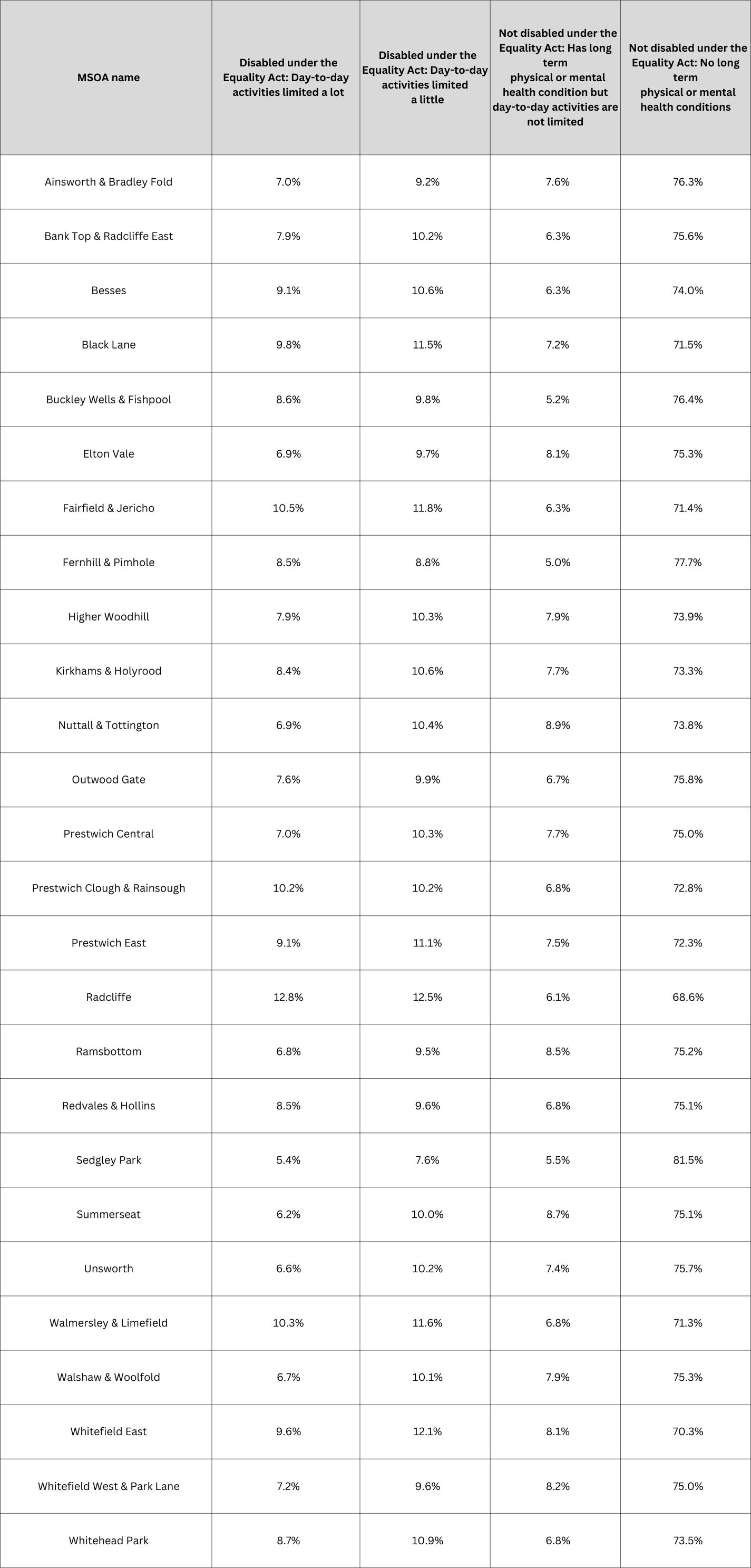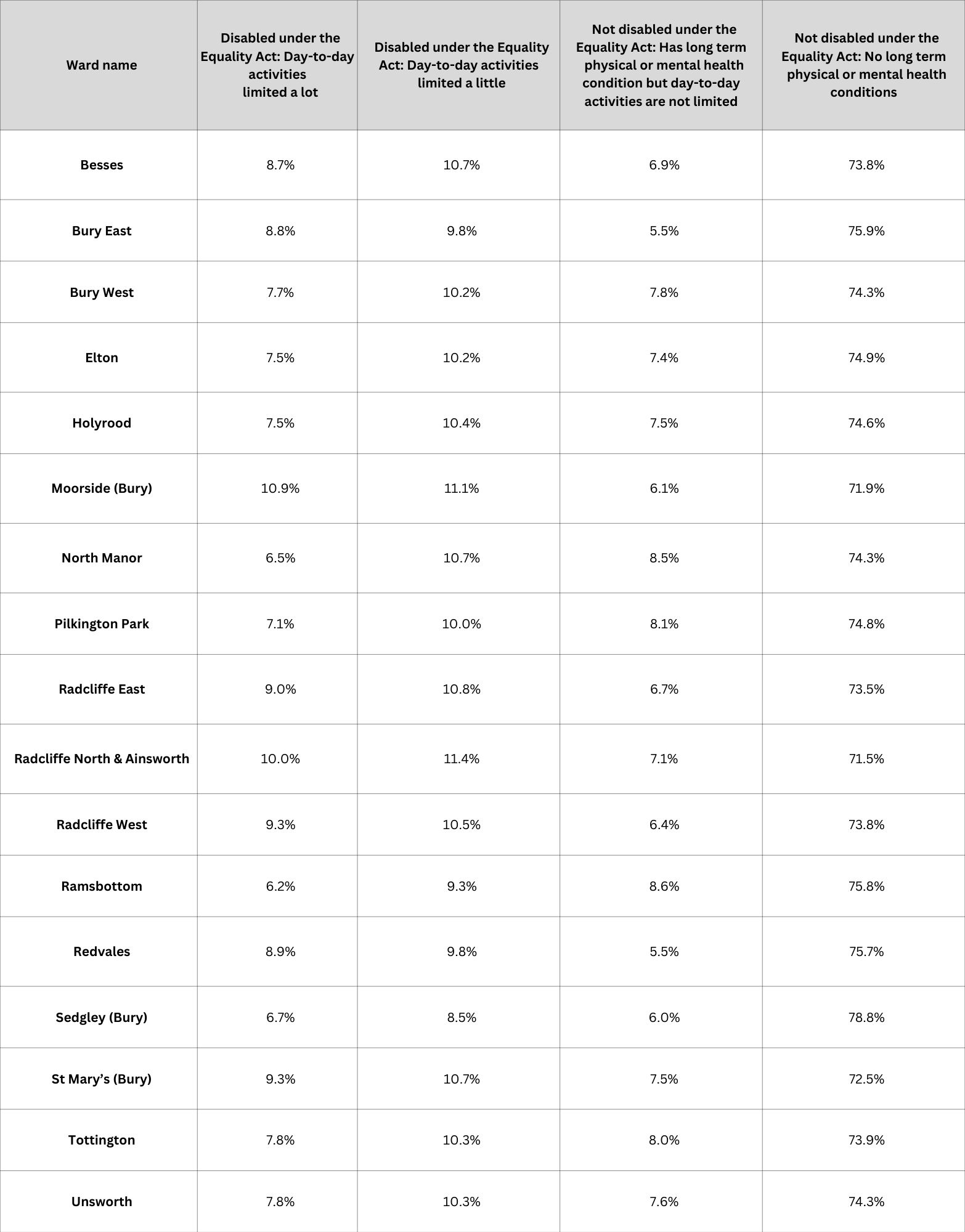Disability
Disability
Disability
To identify disability in England and Wales, people were asked "Do you have any physical or mental health conditions or illnesses lasting or expected to last 12 months or more?". If they answered yes, a further question "Do any of your conditions or illnesses reduce your ability to carry out day-to-day activities?" was presented.
The identification of disability differs from the 2011 Census question used, which asked "Are your day-to-day activities limited because of a health problem or disability which has lasted, or expected to last, at least 12 months?". The question changed in order to collect data that more closely aligned with the definition of disability in the Equality Act (2010). The Equality Act defines an individual as disabled if they have a physical or mental impairment that has a substantial and long-term negative effect on their ability to carry out normal day-to-day activities. The way disabled people were identified has therefore changed between 2011 and 2021 and this may have had an impact on the number of people identified as disabled.
Census 2021 was undertaken during the coronavirus (COVID-19) pandemic, which may also have influenced how people perceive their health status and activity limitations and therefore may affect how people chose to respond.
The table below shows disability by MSOA in Bury.
Radcliffe had the highest number of Disabled under the Equality Act: Day-to-day activities limited a lot at 12.8%, with Sedgley Park the lowest at 5.4%.
The table below shows disability by ward.
Moorside had the highest number of Disabled under the Equality Act: Day-to-day activities limited a lot at 10.9%, with Ramsbottom the lowest at 6.2%.


